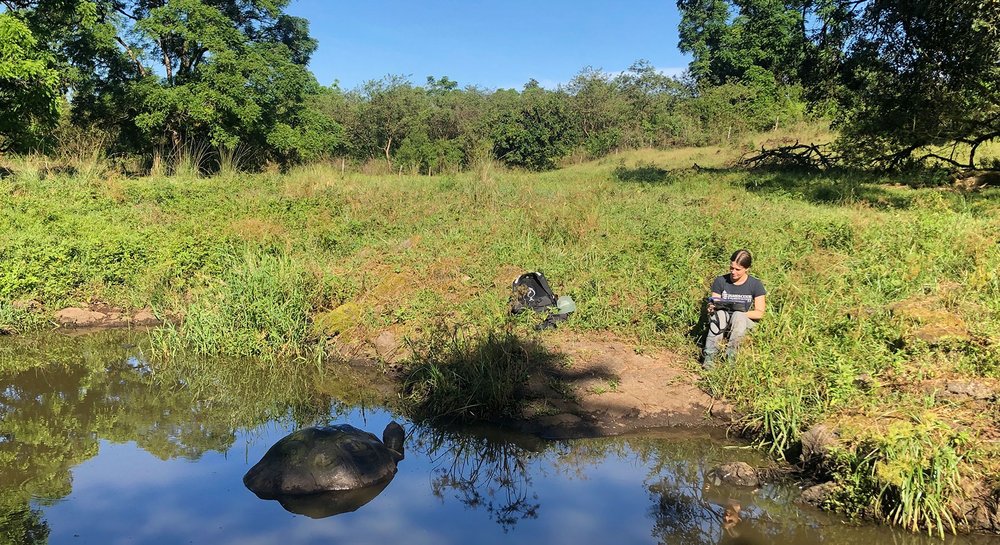
Author: Kyana Pike
If you visit one of the tourist ranches in the highlands of Santa Cruz, you expect to find plenty of tortoises roaming around freely enjoying the well-manicured pastures. What you might not expect to find is a muddy researcher, crouched down in the bushes, diligently recording a tortoise’s every move. That muddy researcher is me, a Ph.D. student from James Cook University in Australia, and I am on my way to becoming one among few women researchers of the Galapagos tortoises. As part of my Ph.D., within the Galapagos Tortoise Movement Ecology Program, I observe tortoises for half an hour at a time. I follow them around from a distance that does not alter their behavior and write down all of their activities. This has sometimes left the tourists very confused, and I have overheard them asking the all-knowing naturalists guides whether I was a painter, the tortoise police, making sure people don’t touch the tortoises, or perhaps could I be a park ranger?
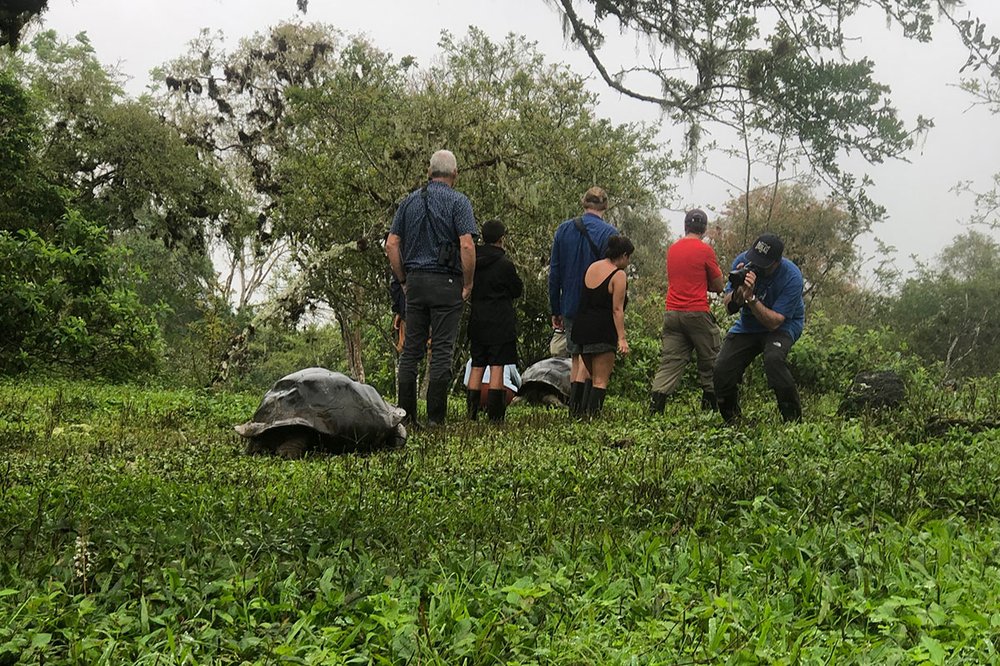
These are all excellent guesses, but that is not why I have spent more than 130 hours spying on tortoises and recording their secret farm life. My research is on the interaction between giant tortoises and agriculture. I am interested in knowing what tortoise activity budgets look like when they are in the agricultural area and whether they act differently in different farms. When I watch the tortoises, I record things like how much time they spend feeding, walking or resting, for example. These behaviors give me an idea of how tortoises use resources like ponds or shady trees and how they respond to encounters with other tortoises, tourists or livestock.
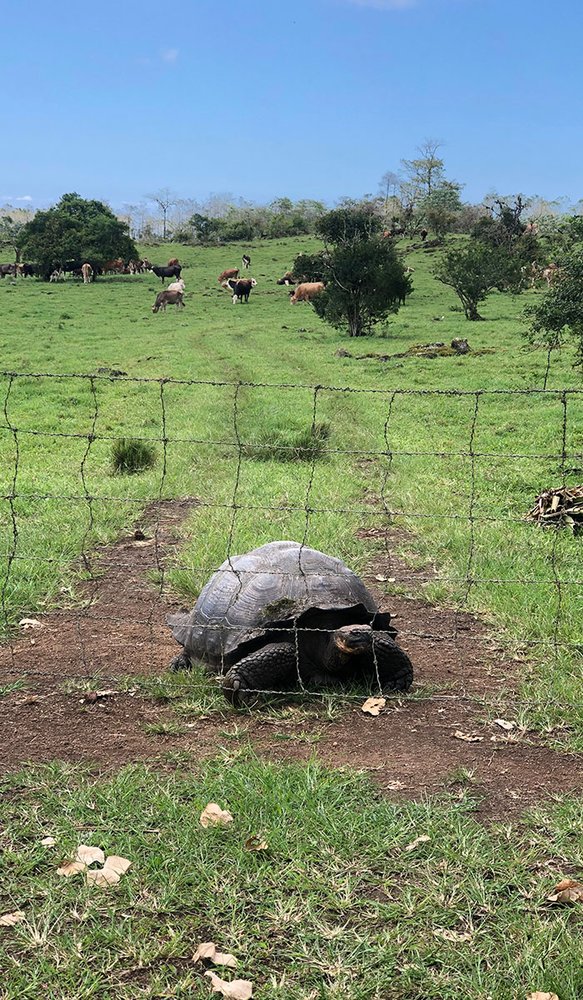
My work takes me to the touristy tortoise ranches, but also to farms with livestock or areas which have been abandoned and are now overgrown with invasive species. This means it’s not just the tourists that are surprised by my constant presence, sometimes curious cows or horses also wander up to take a look at me, watching the tortoises.
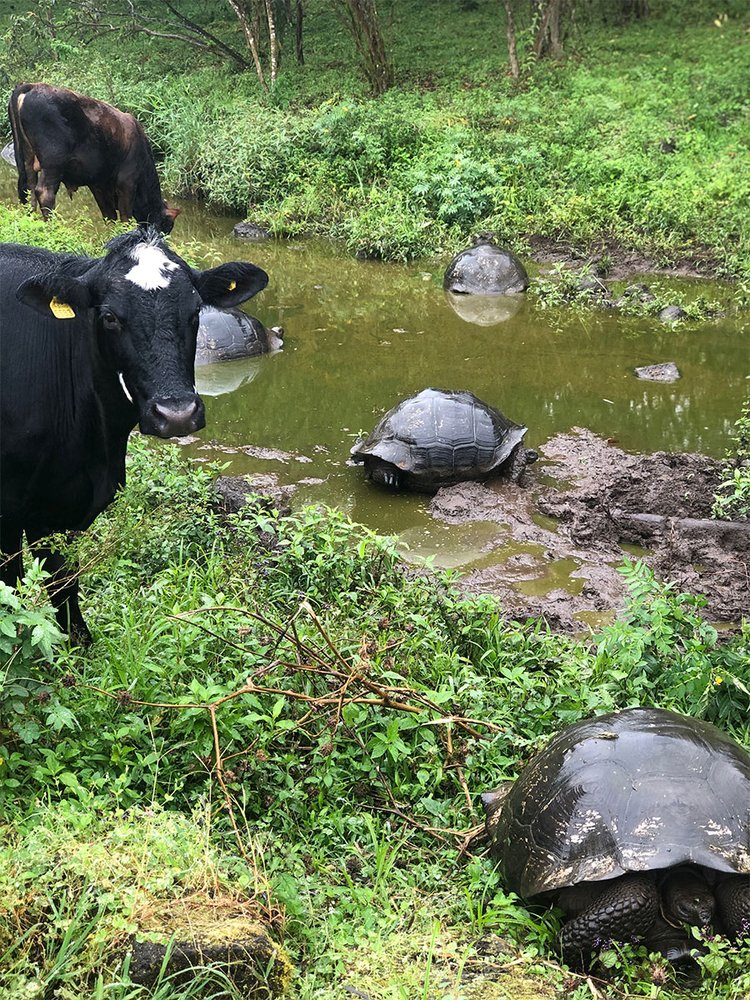
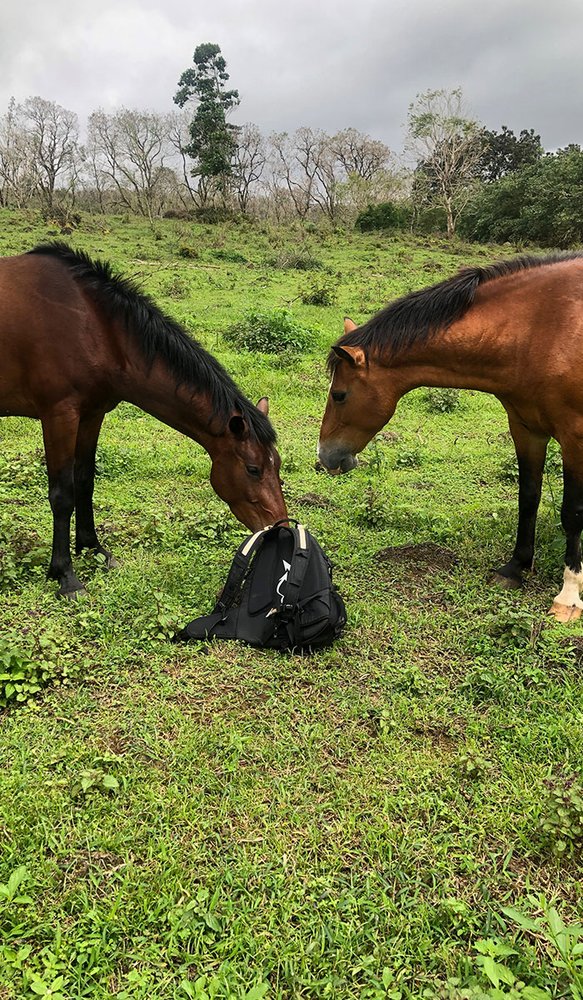
I have often been asked whether tortoises even do anything during my observations. Many people are surprised when I tell them that my ethogram (the list of behaviors I record) contains 23 tortoise behaviors. While I admit, at times tortoises can easily spend the entire 30 minutes without moving a muscle, we have to understand that tortoises are on a different time scale to us. If you live to be 150 years old, you can afford to take your time with things. Tortoises are usually solitary so some of the most interesting observations for me are when tortoises interact with each other. One of my observations even had so much drama, it would serve as an episode of a ‘telenovela’ (a daytime soap opera). In one of the farms, I was observing an adult female who was being courted by a large male. They paired up but were later interrupted by a rival male who also wanted to win the female’s affections. The two males began sizing each other up with their characteristic neck stretching competition, where male tortoises compete by stretching and comparing neck length, with the longer necked tortoise the winner. The two males were well matched, so next they started biting and bumping each other with the weight of their huge carapaces. In all the fuss and commotion between the two males, the female decided she would be better off alone, and ‘ran’ away to leave the males battling it out.
Most of the time, my observations are much more peaceful and serve as an insightful window into the private lives of tortoises, to better understand how tortoises use farms and how that interaction with different farm types may influence their ecology and conservation. So, if you are ever visiting the highlands of the Galapagos, don’t be surprised if you find me staring down a pair of binoculars at a tortoise for long periods of time.
-ENDS-





